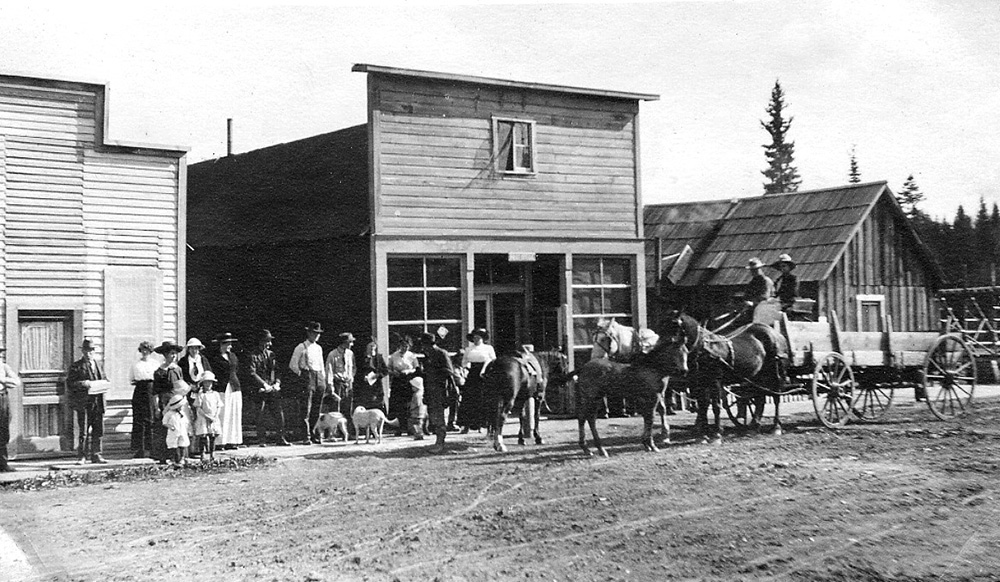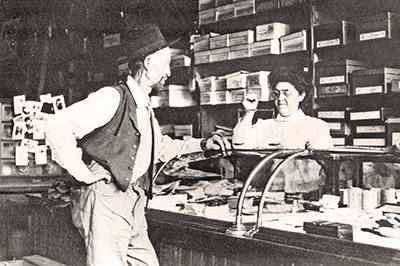
 Main Street in Greenhorn in 1915. (Courtesy Baker County Library District) Enlarge Image
Main Street in Greenhorn in 1915. (Courtesy Baker County Library District) Enlarge Image
In the 1860s, some of the first eastern Oregon mines opened in the Blue Mountains between Baker and Grant Counties. This period marked the start of Greenhorn, situated on rich placer and lode mining territory. The town’s name is disputed, either named for a green uplift in the mountains, or for the inexperienced miners who came to strike it rich.
By the 1900s, the town was incorporated but had few residents. There were enough, however, to boast a Post office, two hotels, several stores, a brothel, and a tiny wooden jail. Like many of Oregon’s other gold mining towns, Greenhorn declined to nearly nothing after the 1942 gold mining ban. Many of its wooden structures remained, rotting in the mountains.
One morning in 1963, residents of nearby Canyon City discovered that the old Greenhorn Jail, dating to 1910, was sitting mysteriously in their town. Someone had moved the entire structure, and no one knew who, when, how, or why. A court case ensued for its return. Because the city straddles the Blue Mountain ridge, the district attorneys of Baker County and Grant County could not agree in which court the case should be held. To this day, the jail remains in Canyon City. Also, to this day, Greenhorn remains the highest town in Oregon at over 6,000 feet, and has the lowest population of any incorporated community - zero.
More Greenhorn Photos

A store clerk in Baker County weighs gold from a miner to pay for purchases. (Courtesy of Baker County Library District) Enlarge Image
Next:
Jacksonville >